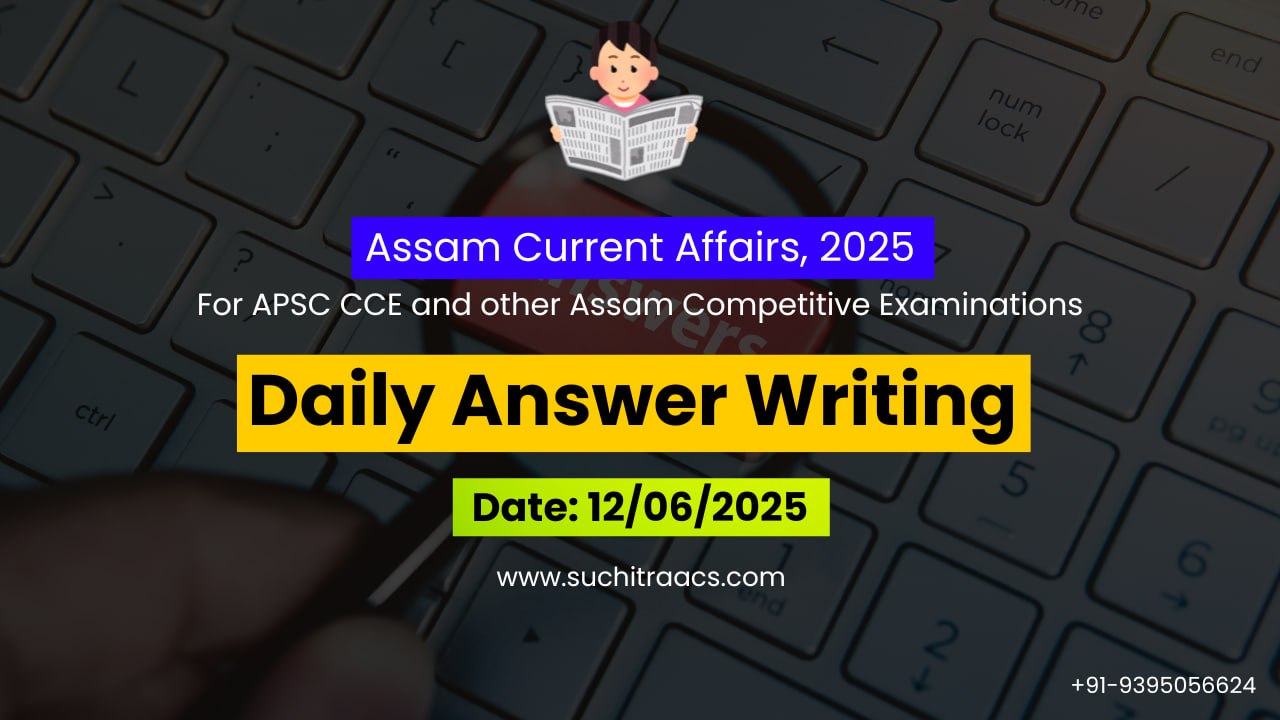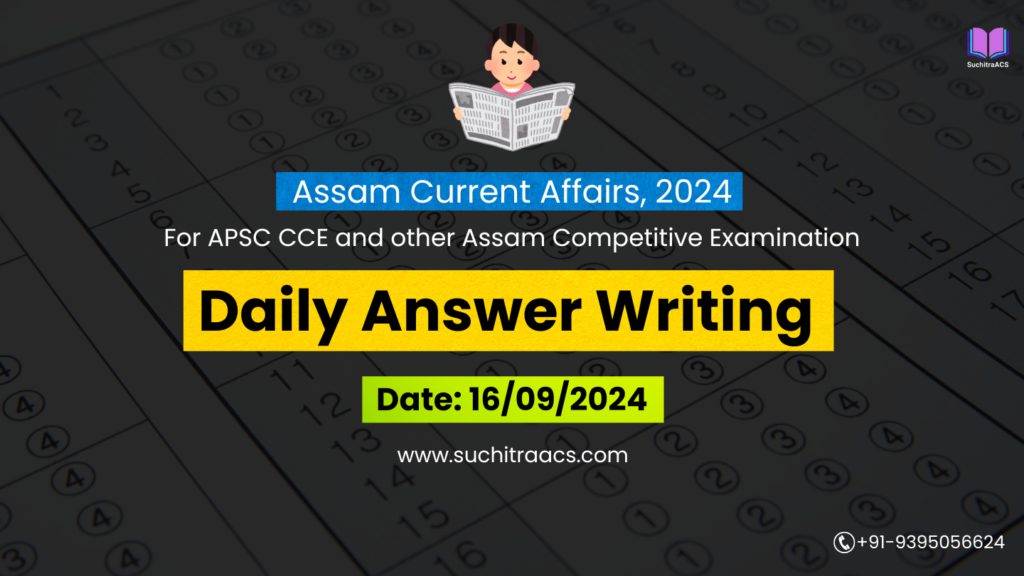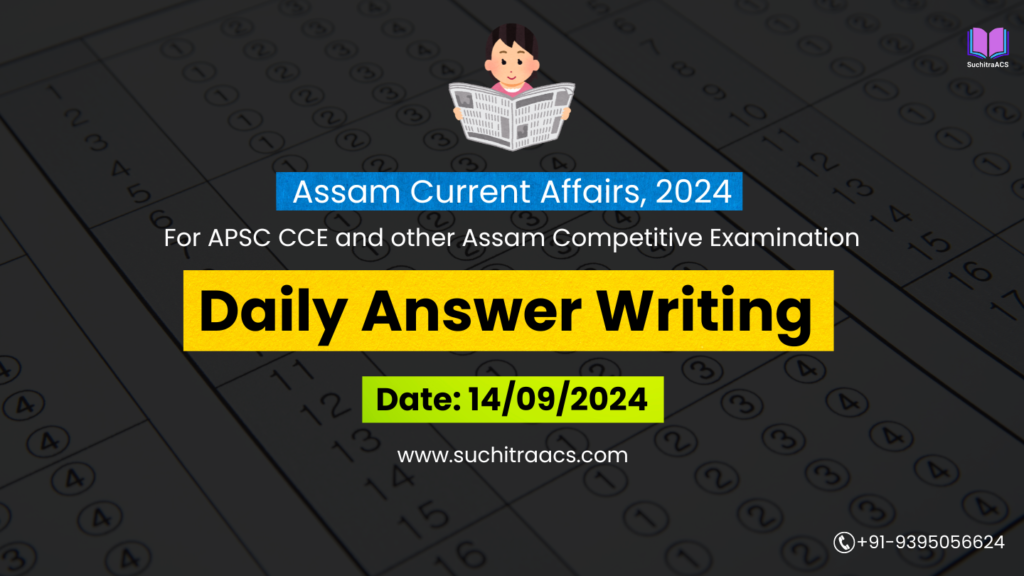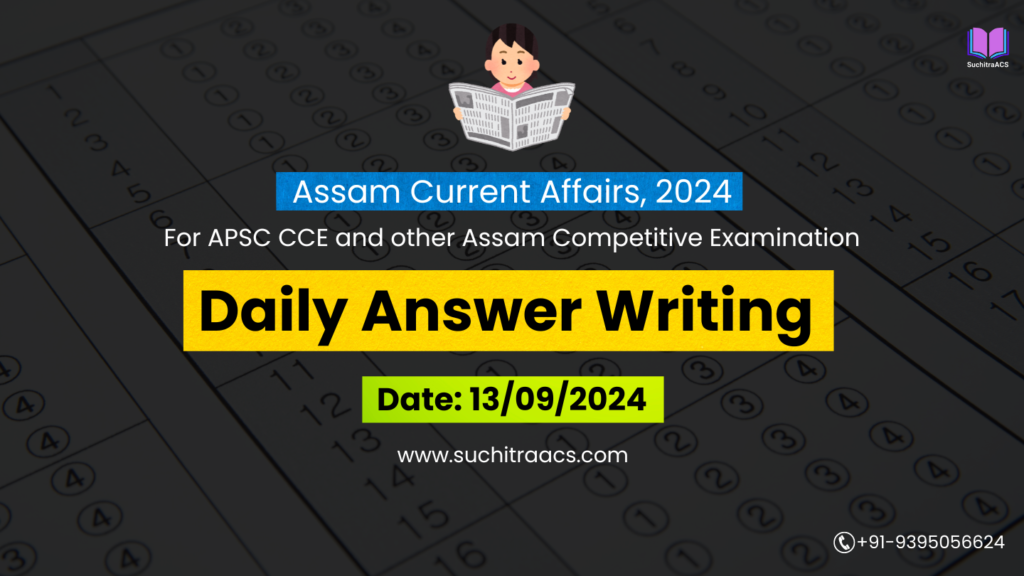APSC Answer Writing (Daily) based on Assam Tribune – 13/06/2025
For APSC CCE and other Assam Competitive examinations aspirants, practicing Daily Answer Writing is vital. This blog covers the most important Main question and its model Answer from the Assam Tribune today (13-06-2025).
📝 Mains Question:
Q. India’s push for energy security must not come at the cost of environmental and human safety. In light of the recent Sivasagar ONGC gas well blowout, critically examine the need for better industrial safety in the hydrocarbon sector, especially in Assam.
📘 Model Answer
Introduction
India’s northeastern region, especially Assam, plays a pivotal role in the country’s hydrocarbon output. Yet, recurrent incidents like the 2025 ONGC blowout in Sivasagar and the infamous Baghjan disaster (2020) underscore systemic gaps in industrial safety, regulation, and environmental oversight. These raise serious concerns over the balance between energy security and ecological-social responsibility.
Energy Importance of Assam
- Assam is one of India’s oldest and most active oil-producing states (e.g., Digboi, Sivasagar, Duliajan).
- Contributes significantly to domestic crude production and natural gas reserves.
- Hosts key PSUs like ONGC and Oil India Limited, and refineries at Digboi, Numaligarh, and Bongaigaon.
Recent Blowout in Sivasagar (June 2025): Key Issues
| Concern | Observation |
| Safety Lapses | Uncontrolled gas discharge during a well servicing operation |
| Operator Oversight | Incident occurred under private contractor supervision |
| Emergency Preparedness | Delayed response and weak public communication |
| Environmental Risk | Threat to air, groundwater, and local ecosystems |
| Public Anxiety | Evacuation of nearby villagers due to risk perception |
Major Challenges in the Hydrocarbon Sector
1. Aging Infrastructure
- Many wells in Assam are 30–50 years old, with obsolete equipment.
2. Lack of Real-Time Monitoring
- Absence of early warning systems, blowout preventers, and gas leak detection.
3. Weak Regulatory Oversight
- State Pollution Control Boards often under-resourced; PNGRB’s inspection is periodic and limited.
4. Contractor Risks
- Increasing reliance on outsourced contractors dilutes accountability.
5. Inadequate Community Engagement
- Locals often unaware of risks and excluded from mock drills or safety audits.
Lessons from Baghjan (2020) and Sivasagar (2025)
- Need for multi-agency response, faster evacuation planning, and ecosystem restoration.
- Judicial inquiry post-Baghjan emphasized need for third-party safety audits and transparency.
Way Forward
| Domain | Action Plan |
| Regulatory Reform | Establish a State-level Industrial Safety Authority for Assam’s oilfields |
| Technology Upgrade | Mandatory automated BOPs, pressure control systems, and AI-based surveillance |
| Disaster Preparedness | Conduct quarterly drills, create buffer zones around wells |
| Transparent Governance | Publicly release incident reports, safety audit results, and compensation plans |
| Skill Development | Train local youth in energy safety operations under Skill India missions |
Conclusion
Assam’s oil economy is vital, but its sustainability hinges on prioritizing safety, ecology, and public confidence. A robust framework that blends technology, accountability, and grassroots involvement is essential to prevent energy from becoming a liability. Future growth must be cleaner, safer, and more people-centric.
✨ Looking for top-quality APSC Mains Guidance with Personalised Mentor?

🔔 Join Our WhatsApp Study Group!
For exclusive access to premium quality content, including study materials, current affairs, MCQs, and model answers for APSC CCE and other Assam competitive exams.
Click here to join: SuchitraACS Study WhatsApp Group
📚 Want to know more about SuchitraACS’s most affordable courses?
Click here to know more: SuchitraACS Courses for APSC CCE and Assam Competitive Examinations




